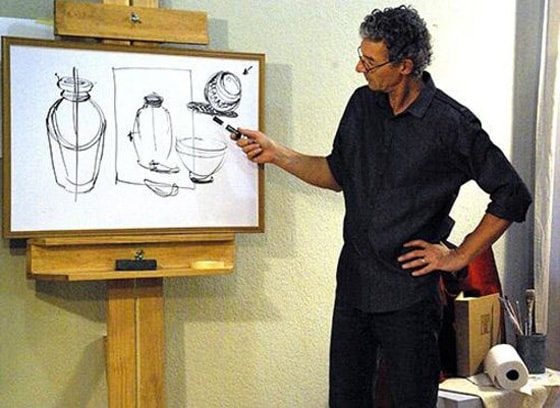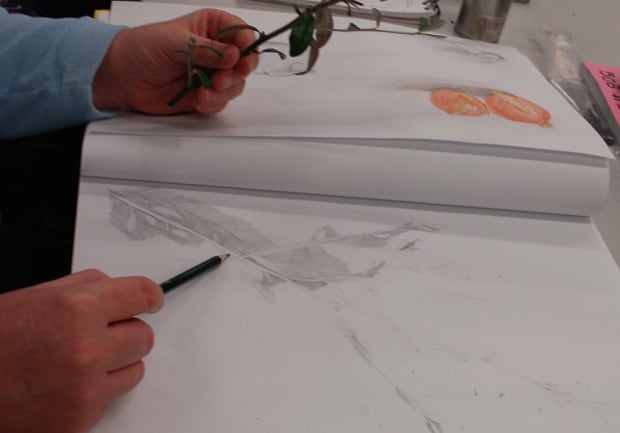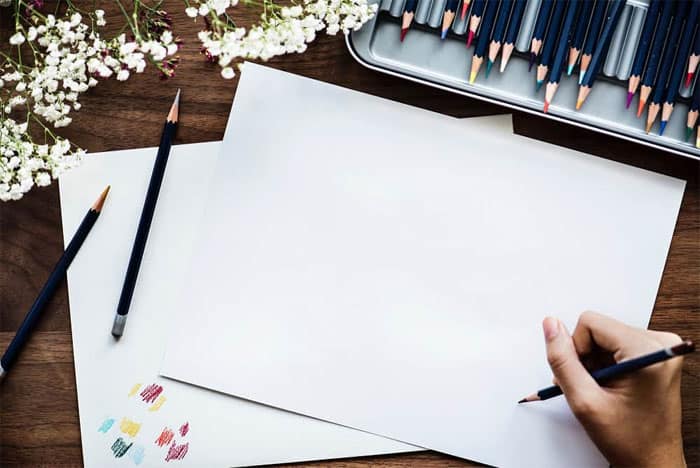We’ve all doodled at one point in our lives, frequently while we were being bored in class. Whether we were drawing a caricature of our teacher or doodling our name, every single person in this world has at least drawn something – good or bad – in their lives.
As long as we can hold a pencil in our hand, we can draw something. It doesn’t matter if we are a beginner or a professional, drawing is a fun hobby for children and adults alike.
Yes, everyone can draw, but not everyone is a natural artist. Just because we can hold a pencil and draw some shapes, it is not guaranteed that we’ll all be good at it.
In fact, artists spend several years, if not decades, training to become a professional painter, cartoonist or illustrator.
At the same time, it is possible for everyone to learn to draw. Even without training, a person can make some sketches, paintings, drawings, designs or cartoons by following certain guidelines.
Although true talent and skill requires patience and practice, it is definitely possible to learn how to draw as a complete beginner.
Learn to Draw as a Beginner

True talent in painting comes from within, but skill comes from practice and dedication.
Drawing is actually a skill that can be learned, even when you don’t have exceptional talent or the genes to help you. In fact, this is a skill almost anyone can learn if they practise hard enough.
As a complete beginner, you can also learn to draw by yourself, simply by following a few basic guidelines.
1. Decide on your Style
The first step would be to decide on what exactly you want to learn: water color, sketching, cartoons, portraits, landscapes, florals or abstracts.
Each kind of art is different, and the techniques to learn them are different, as well. Landscapes and portraits are the hardest to learn, and take years of practice; cartoons and abstracts, on the other hand, are relatively easier to learn.
If you are a complete beginner who has never tried to draw anything in your life, it would be better if you start with something easy, like cartoons and figures.
2. Start Simple
It’s also important if you start with something simple, like a box or a stick figure. When children start learning how to draw first, they are given apples and bananas to replicate on paper.
Start with something similarly easy that you see in your room everyday: your coffee mug, your couch, the patterns on your blanket, etc.
Start with the basic shape first; then add the details, like shadow or patterns, shade and colors, etc. Start drawing things that have a simple shape and structure instead of something complicated, i.e. it will be easier to draw a coffee mug than a cat.
3. Repeat as Many Times as Needed
It’s not enough to draw something once and then forget about it. The same thing, however small and simple, needs to be drawn again and again until it is perfect. There’s nothing better than practice to develop skill when it comes to art.
When you see an artist whose work you admire, be sure that they have come this far with more than an adequate amount of practice.
It is said that a person needs at least “10,000 hours of practice” to finally be good at something (“The Outliers – Malcolm Gladwell). If you want to be even moderately good at drawing, you’ve got to put in some serious practice.
4. Draw From another Drawing
It is easier to draw something from another drawing than from real life; when you are a beginner, you will find it easier to copy your sketches or drawings from another art project.
When professional artists start their art, they first learn by copying the paintings of famous painters and artists.
In the same way, if you want to copy the likeness of a person or a scenery, it will be easier for you to copy from another painting or illustration.
5. Draw From Photographs
If you want to start with landscapes or portraits, or even something as simple as a chocolate cake, take a photograph first.
Use the photograph to start your art project; it will be much easier to do so when you have a photograph of what you want to recreate on paper and canvas.
Why is this? Because in a photograph, you get a two-dimensional version of what you want to draw instead of a 3D or a 4D version.
In photographs, you get a clearer idea of the object, scene or person’s lines and borders, as well as the shadows surrounding the object. This all makes it easy to draw the object for a beginner.
6. Inflict your Personality
Art isn’t really about following someone else’s style or designs, but a great way to express ourselves. Whatever you are attempting to draw or paint, try to project your own personality in your art.
Whether you are drawing landscapes, cartoons or doodles, add little personal touches in each of your work. Add colors that you love instead of the ones that you see before you, or add small details that are not present in the model you are using.
7. Experiment with your Art

Never stop experimenting with your art; you don’t have to stick to drawing the same trees or the same cartoons every day, but you should try experimenting with your style.
Draw different shapes in your tree figures, or add different facial distinctions and emotions to your cartoons. If you are drawing cartoons, give them different body structures and faces, moods and personalities.
Art is always an expression of the person; the more you experiment with your drawings, the more you’ll learn over time. Otherwise, drawing the exact same details over and over again will make it a dull chore, something you’ll lose interest in soon.
8. Stick to your Medium
When it comes to art, it is good to experiment but also to stick to a single medium. At least when you are a beginner, it is important that you learn everything there is to know about a single medium than to experiment with everything.
If you love to sketch and doodle, stick to it instead of also trying to paint landscapes with acrylic paint or watercolor.
In art, one of the biggest mistakes anyone can make is to try and be a “jack of all trades, master of none”. Even the old masters only stuck to their favorite medium of art instead of trying a little bit of everything.
Art is vast and there is a lot to learn, even when you simply stick to a single medium; if you are serious about learning to draw, it is very important to decide on a medium of art and learn everything about it.
9. Practice Regularly
Art isn’t something that you dabble in once in a while and then ignore for days; instead, this is a skill and like most skills, you need to practice regularly. Drawing is something that needs to be practiced every other day, if not every day.
Every day, you need to paint or draw something in your sketchbook, even if it’s just a doodle. Art should be a regular part in your life, not just something to try here and there.
10. Keep on Learning
There are a lot of materials available everywhere if you want to learn drawing from experts. From YouTube videos to online courses, artists in your locality or private tutors – everyone can contribute to your experience and education. You can use online videos and free courses to learn drawing by yourself, or take the help of a professional.
You don’t have to be born with talent to learn how to draw; it is a skill that you can master with practice, patience and dedication.
Almost anyone can learn to draw, by themselves or with the help of an expert, if they just try. The guideline above has all the necessary steps that you can take to start to learn to draw, even if you are a complete beginner.

